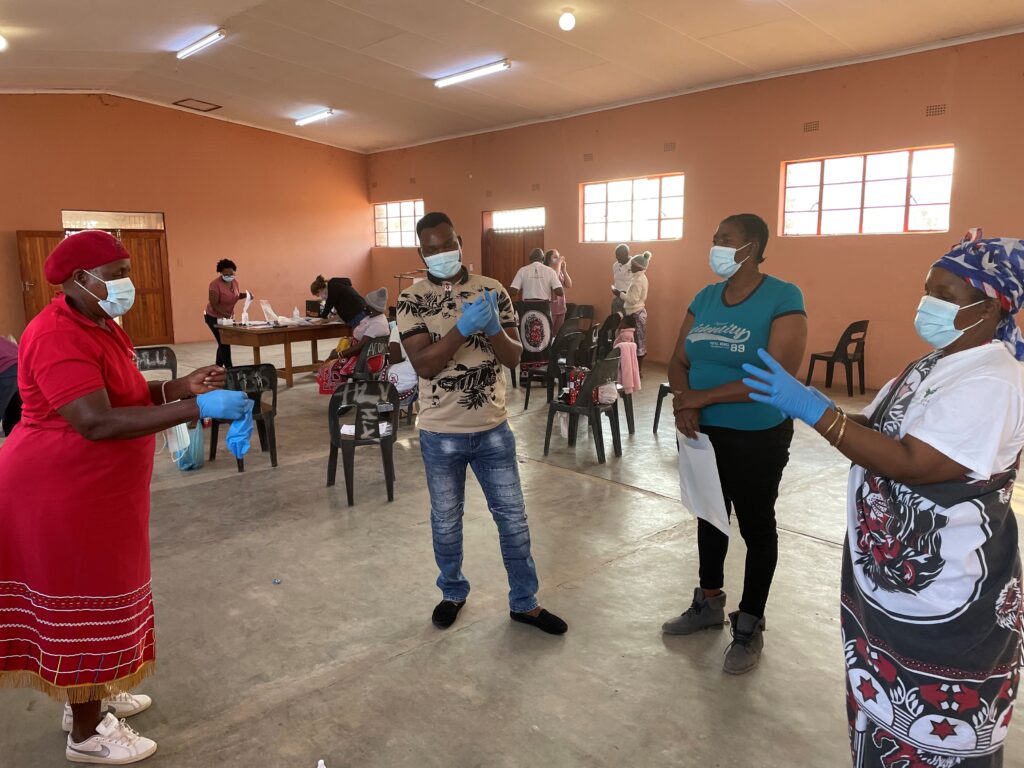Research translation is critical to the impact of Agincourt research. This is seen as the gathering, sharing, and use of knowledge by key players to accelerate the advantages of innovation derived from research that can support healthcare systems and enhance public health.
Below are some examples of the latest research translation activity:
EVALUATING SOUTH AFRICA’S NATIONAL SALT POLICY

In 2016, South Africa introduced a salt policy regulating the amount of salt in processed foods. This is guided by the World Health Organization recommendation to limit salt intake to 5g per person per day as high salt intake has been linked to cardiovascular diseases. The study on Health and Ageing in Africa: Longitudinal Studies of an INDEPTH Community (HAALSI), collaboration of the MRC/Wits-Agincourt Unit and Harvard Center for Population and Development Studies, evaluated the salt intake of 400 older adults through 24-hour urine samples after implementation of the first phase of salt regulation. It found the average daily intake of salt to be 8.1g/day with 65% of adults in the group having >5g of salt per day, thus exceeding WHO recommendations. To evaluate the impact of the salt policy, the Agincourt Unit is currently validating the use of spot urine tests to estimate population salt intake and will be comparing sodium concentrations from spot urine tests collected from >1000 adults during HAALSI waves 1, 2 & 3 (i.e. before, during and after implementation of the policy).
SELF-MANAGEMENT APPROACHES AMONG INDIVIDUALS WITH MULTIPLE CHRONIC HEALTH CONDITIONS IN RURAL SOUTH AFRICA
The Self-management approaches among individuals with multiple chronic health conditions in rural South Africa project is assessing the extent to which adult individuals, 40 years and older with multiple chronic health conditions, self-monitor their health, including what methods they use and the effect of self-monitoring on behaviours and health outcomes. Secondary and primary qualitative and quantitative data is collected from individuals with chronic health conditions who attend a network of primary healthcare facilities that serve the Agincourt HDSS population. The study is piloting the use of digital technologies. A random sample of 100 participants were issued with digital devices for self-monitoring of physical activity and sleep (activity trackers), weight (scales), blood pressure (blood pressure monitors) and glucose (glucometers) to use for 6 months. The study is also using audio diaries to capture participants’ experiences of self-monitoring through recording voice notes via the Whatsapp mobile messaging app. As Whatsapp uses end-to-end encryption, it offers a safe and low-cost option for recordings to be transferred between the participant and research team.

HbA1c VALIDATION STUDY
Data collection has been completed on an HbA1c validation study investigating the appropriate HbA1c threshold for diabetes diagnosis in a sub-Saharan African population. The study was evaluating techniques for HbA1c and CRP assays based on dried blood spots, working with Global Labs (now Universal Pathology Laboratories, UPL) in Durban, and the Universities of Washington and Southern California that have special expertise in these methods. Agincourt demonstrated significant diagnostic discordance between fasting blood glucose and glycosylated hemoglobin (HbA1c), two of the most commonly used diagnostic tests in the population, with HbA1c tests classifying four times as many individuals as having diabetes compared to fasting blood glucose tests.
TRADITIONAL HEALERS HIV TESTING

Recognising the widespread acceptability and use of traditional healers in the South African context, and acknowledging that some individuals who use traditional healers are less likely to engage with biomedical health facilities (or only engage after seeking care from a traditional healer), Agincourt is training traditional healers to undertake HIV counselling and testing (HCT). The study, Traditional healer-initiated HIV counselling and testing in rural South Africa hopes to: a) prevent delay in diagnosis of HIV; b) build a rapport with healers that enables a closer working relationship between traditional healers and health care workers (building a referral system); and c) highlight the possibility of working more closely with traditional healers to improve the health of rural South Africans. Preliminary findings (Audet, Clemens, Ngobeni et al: 2020) have found that healers are willing to undertake HCT, with a recently-funded study now underway in Agincourt to determine the feasibility.
SMELL-CARDS TO SCREEN FOR PARKINSONS DISEASE
Anosmia, or the partial or complete loss of smell, has recently received much attention as a symptom of SARS-COV-2 infection. Anosmia is also recognised as an early sign of several neurological conditions, including Parkinson’s disease and Alzheimer’s disease. However, little research on this has been conducted on the African continent. As part of pilot work, the Social determinants of Parkinsonism in rural South Africa study is examining the prevalence of Parkinsonism in the Agincourt study site. The Unit piloted the use of the University of Pennsylvania Smell Identification Test (UPSIT) to determine whether such a test is appropriate and feasible to undertake in a rural South African setting. The UPSIT is a set of four scratch-and-sniff 10-page booklets (40 smells in total), and it assesses participants’ acuity of smell by their ability to correctly identify the specific smell on each page.
DETERMINING CAUSE-OF-DEATH WITH INTERVA
The HDSS-based Mortality Surveillance in Africa and South Asia is an Excess Mortality measurement initiative funded by the Bill and Melinda Gates Foundation. The study aims to answer the fundamental question on the impact of COVID-19 on mortality and the scale of excess deaths, and the population sub-groups most affected. The initiative aims to characterise all-cause mortality rates and trends, by age and sex, across a range of rural and urban sub-Saharan African and South Asian settings under continuous health and demographic surveillance. In these settings, verbal autopsy interviews are conducted with people who were present at someone’s death to elicit information to assist with determining the cause of death as part of the comprehensive and rigorous mortality surveillance. The Excess Mortality initiative uses the latest InterVA (interpreting verbal autopsy) public-access software to interpret the responses gathered from standardised verbal autopsy questionnaires to reliably interpret the likely cause of death
